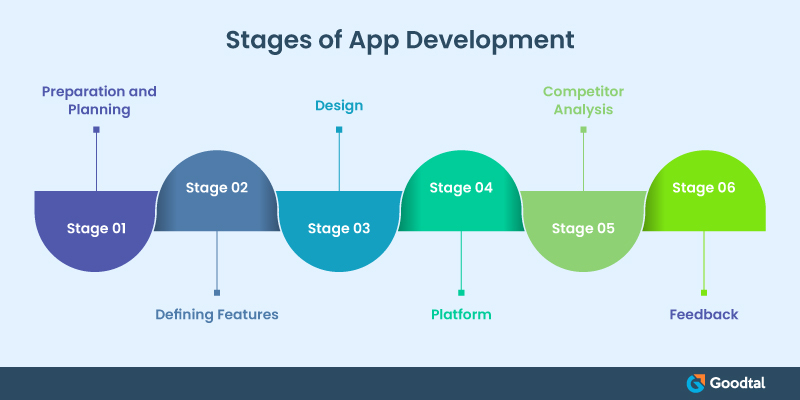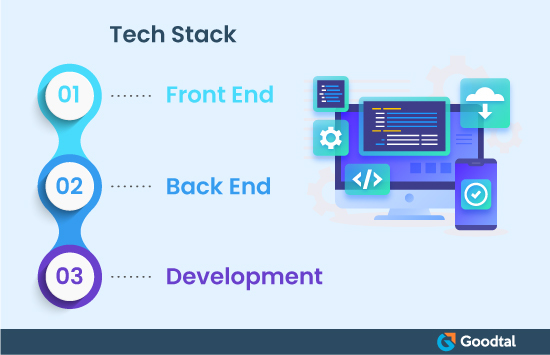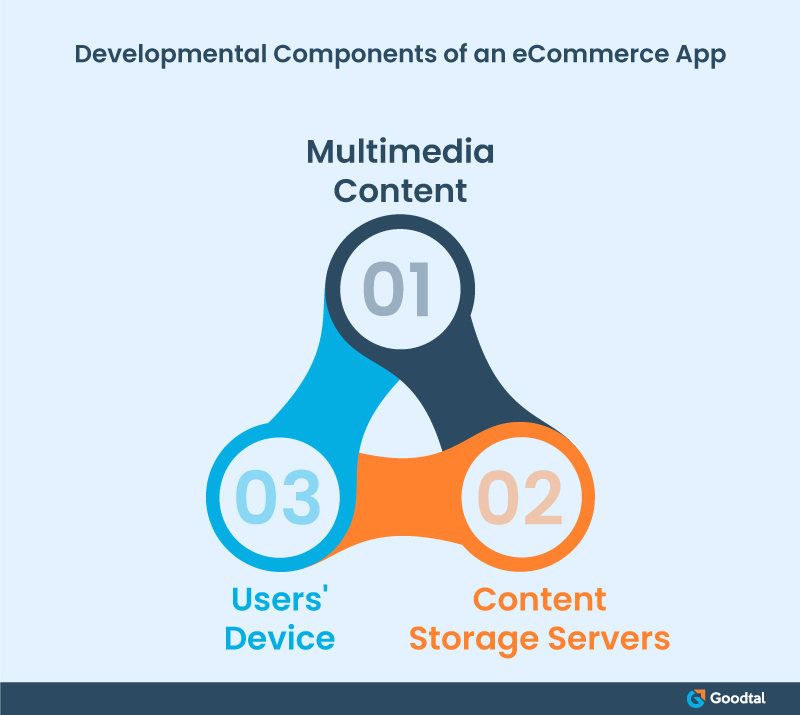
Smartphones are being used by almost everyone in urban areas and many in rural areas. Internet connectivity is improving, and consumers are increasingly buying products on eCommerce apps. With Covid-19 forcing people to stay indoors due to frequent lockdowns, buying online has become standard across the globe. eCommerce stores are selling everything from pen drives to giant LED Televisions.
The eCommerce app should be fast, intuitive, and scalable to engage the consumers and increase sales. In this blog, we provide a step-by-step process of eCommerce App development. 'One Strategy Fits All' is not valid in this case as with the change in business model, the target audience also changes. Before one begins with actual App development, some homework needs to be done.
Stages of App Development

Preparation and Planning
This is the first stage of the App development process and should begin with marketing research, deciding the technology to be used, and setting up a team that will work on the project. The success of an eCommerce app depends on how close it is to business objectives.
Before eCommerce app development, you need to identify the audience and know their likes, dislikes, and demography. This will help develop user journeys and keep them engaged for repeat purchases.
Defining Features
Decide on basic features for the App and create a particular Product Tech Requirements document(PRD). Some of the basic features include Convenient Signing in & checking out, Push Notifications, Integrating Multiple Payment Channels, Order Memory, and a Feedback and review system.
There should be clarity on features before the actual development of the eCommerce app to make it an efficient process.
Design
For an eCommerce App, the design is what sets the tone. Some of the basics for design are a simple menu, filters to choose products, large images, instant notifications design and information on price, and payment methods in bold. The designer should focus on the user's requirements and expectations and create a User Interface(UI) wireframe.
Design is the business identity of an eCommerce company, and color schemes, eye-catching visuals, and smooth transitions are some of the design elements which have a lasting impression on the minds of consumers.
Platform
Before deciding on the platform, the business model of the eCommerce company should be looked upon. Other factors include development costs, CMS, Database, and scalable framework. This information makes it easier to decide whether to go for an Android app, an iOS app, or both. You need to go for the platform where your target audience is on.
Competitor Analysis
The eCommerce segment is crowded with competitors, and thorough research should be done about what they are offering. The competitive advantage and promotional tools they use should be taken into consideration.
The first step is to identify who the competitors are. Competitor Analysis is a technique of comparing product features with those of rivals. With this, eCommerce firms can get insights into how they can improve their offerings and what is trending at that point in time.
Feedback
After the Minimum Viable Product(MVP) is released, it is time to get feedback from potential customers. Feedback helps improve the App by finding out what the target audience likes and what they don't like. There are several ways of collecting feedback, including customer surveys, Customer Satisfaction Scores, reviews, and ratings about customer experience.
Having performed the above steps, lets' begin with the app development process. Tech stack can make or mar a brilliant design & business model.
Tech Stack

Front End (User Interface)
The front-end is what users see while using the App. It is necessary to optimize the front-end to enhance their experience. The optimal loading speed of an eCommerce App is 2.5 seconds. If it takes longer than that, potential customers will leave before purchasing. Apart from optimizing libraries and page content, Content Delivery Network(CDN) should also be used. CDN comprises servers distributed across the globe, which enable fast delivery of internet content.
Back End (Server Processing)
Back-end technology is considered to be the skeleton of an eCommerce website. These sophisticated technologies control order management, SEO settings, scaling, and user registration. Errors in the back-end will break down the entire App, and for eCommerce, a microservice application strategy must be followed.
Development (Platform with libraries & interfaces)
eCommerce applications store large amounts of data, and most of the data is stored in Linux-based databases. Development cost, inventory, CMS database, and a scalable framework should be decided for development. Here are a few suggestions.
For Android eCommerce App
- Programming Language(Java/Kotlin)
- App Development Tools(Android Studio)
- UI Framework(Jetpack Compose)
- Android UI
For iOS app development
- Programming Language(Objective-C or Swift)
- App Development tool(XCode, AppCode)
- UI Frameworks(UIKIt or SwiftUI)
For cross-platform apps
- React Native (JS)
- Flutter (Dart)
- Xamarin (C#)
Developmental Components of an eCommerce App

(1) Multimedia Content
Diverse content, which includes images, texts, graphics, audio & videos, is used in an eCommerce App. These drive the user's journey on the App and lead to sales. This content should be created to imitate interactions between two humans and promote customer loyalty.
(2) Content Storage Servers
As a vast amount of content will be stored on the servers, they need to be powerful. Users will receive this content through the servers, and essential details regarding them will be captured. The server must be robust and reliable to support such a large user base.
Since multimedia servers simultaneously process vast amounts of data from thousands of users, they need parallel processing capability. Another aspect that should be kept in mind is that videos will be used for advertisements and product demonstrations. With many users accessing them simultaneously, there will be a heavy load on the servers, and hence they need to be powerful enough.
(3) Users' Device
Different users will access the eCommerce app via smartphones, tablets, laptops, and desktops. Hence, the App needs to work equally well across all the devices. This will require both design and technology to be compatible across different devices and platforms.
Essential Features for an eCommerce App

Data Security
Users have to provide a lot of personal information on an eCommerce App, including name, address, contact number, credit card details, or bank account details. This is sensitive information and can spoil the reputation of an eCommerce company if it falls into the wrong hands. Hence, it becomes necessary to ensure The use of state-of-the-art encryption technologies prevents data theft. Other measures include using a private cloud, restricting access, and having an alarm system that immediately alerts the administrator of a data breach.
Scalability
For a good eCommerce App, the number of users will only grow, so the App needs to be scalable. This aspect needs to be taken into account even when developing the App. Developers should be able to forecast the number of users and build the architecture accordingly.
Scalability is not only about increasing the capacity of servers & databases when required but also about the technology used in building the App. Software developers need to ensure that the technology they use is scalable and has an excellent support ecosystem.
There will be a multi-fold increase in users during the holidays and festival season, increasing sales and profits. Servers should be able to support this rush and be fast simultaneously.
Stability
Many people use eCommerce Apps to save on time, and if they take time to load or show irrelevant products or buttons dont load correctly, consumers are unlikely to revisit the eCommerce app. The App should be reliable and stable all the time as users don't like apps that crash frequently. Developers should do thorough testing, receive user feedback, and provide frequent updates.
To ensure stability at all times, eCommerce firms should run QA tests regularly, make several product iterations, receive feedback and release fixed updates.
To sum it all up…
In this fast-paced world, having an eCommerce app for your business is a good bonus, whether you are operating in the B2B or B2C segment. The bottom line remains that eCommerce App Development should focus on what the customer wants and find the best technological solution. An eCommerce App can provide a global presence, and it can be accessed directly from smartphones without any need for web browsers. Consumers should be able to have an in-store experience via an eCommerce app while being at home.
Most of the eCommerce firms outsource their app development process. Getting in touch with custom mobile app development companies who can come up with a robust & scalable App will be the best option. As discussed, Scalability, Security & Stability are three pillars of an efficient eCommerce App. Goodtal provides you with a list of top eCommerce App development companies.
